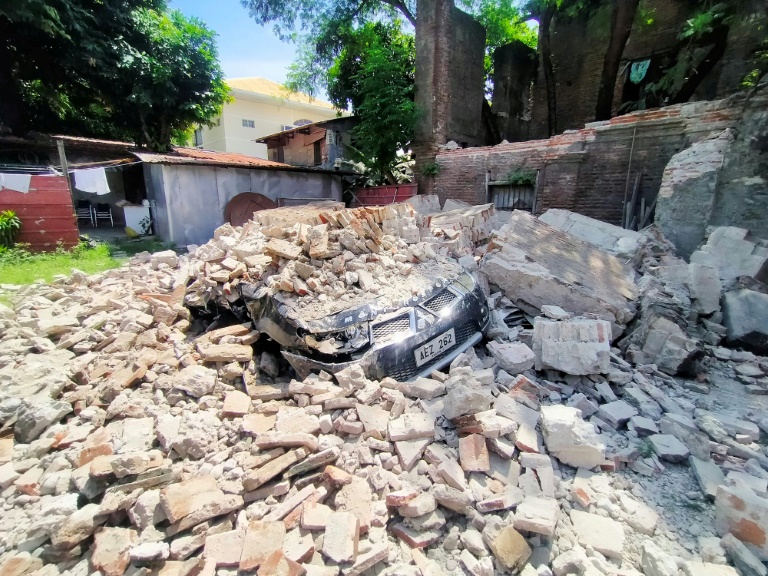A 7.0-magnitude earthquake hit the northern Philippines Wednesday, authorities said, killing one person, shattering windows at the epicentre and shaking high-rise towers more than 300 kilometres (185 miles) away in the capital Manila.
The shallow but powerful quake struck the mountainous and lightly populated province of Abra on the main island of Luzon at 8:43 am (0043 GMT), the US Geological Survey said.
Shallow earthquakes tend to cause more damage than deeper ones.
A 25-year-old construction worker in La Trinidad, the capital of the landlocked province Benguet, died when the three-storey building he was working on collapsed, police said. Seven other workers escaped unharmed.
In the municipality of Dolores in Abra, which felt the full force of the quake, terrified people ran outside their homes and shops, and the local market’s windows were broken, Police Major Edwin Sergio told AFP.
“The quake was very strong,” Sergio said, adding there were small cracks in the police station building.
“Vegetables and fruits sold in the market were also disarranged after tables were toppled.”
A video posted on Facebook and verified by AFP showed cracks in the asphalt road and ground in the nearby provincial capital of Bangued, though there was no visible damage to houses or stores.
But a number of injured people in Bangued were taken to hospital, police chief Major Nazareno Emia told AFP.
“Some of the buildings here show cracks. Power was cut off and internet as well,” he added.
Congressman Ching Bernos, who represents the lone district of Abra, said the quake “caused damages to many households and establishments”, but did not elaborate.
University student Mira Zapata was in her house in San Juan municipality when she felt “really strong shaking”.
“We started shouting and rushed outside,” she said, as aftershocks continued.
“Our house is ok but houses down the hill were damaged.”
– Ring of Fire –
The Philippines is regularly rocked by quakes due to its location on the Pacific “Ring of Fire”, an arc of intense seismic activity that stretches from Japan through Southeast Asia and across the Pacific basin.
Wednesday’s quake was the strongest recorded in the Philippines in years.
“Some of our personnel were pruning branches so they had to climb down immediately after they felt the strong shaking,” said Pangasinan provincial police chief Colonel Richmond Tadina.
In Vigan City, in the nearby province of Ilocos Sur, centuries-old structures built during the Spanish colonial period were damaged.
Verified video footage posted on Facebook showed the Bantay Bell Tower in the popular tourist destination partially crumbling.
“We can’t rule out the possibility of another strong earthquake,” said Renato Solidum, director of the Philippine Institute of Volcanology and Seismology.
President Ferdinand Marcos Jr, whose family stronghold is in the north, was expected to visit the affected region as soon as it was safe, his press secretary Trixie Cruz-Angeles said.
There were reports of landslides in some areas. National disaster agency spokesman Mark Timbal said road-clearing operations were under way.
There were no reports of damage to dams in the region, he added.
In October 2013, a magnitude 7.1 earthquake struck Bohol Island in the central Philippines, killing over 200 people and triggering landslides.
Old churches in the birthplace of Catholicism in the Philippines were badly damaged. Nearly 400,000 were displaced and tens of thousands of houses were damaged.
The powerful quake altered the island’s landscape and a “ground rupture” pushed up a stretch of ground by about three meters, creating a wall of rock above the epicentre.
In 1990, a magnitude 7.8 earthquake in the northern Philippines created a ground rupture stretching over a hundred kilometres.
Fatalities were estimated to reach over 1,200 and caused major damage to buildings in Manila.
The nation’s volcanology and seismology institute regularly holds quake drills, simulating scenarios in the nation’s active fault lines.










